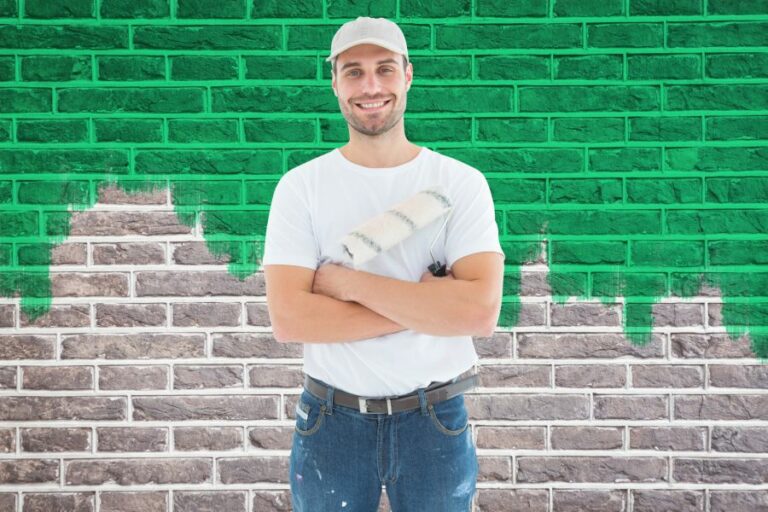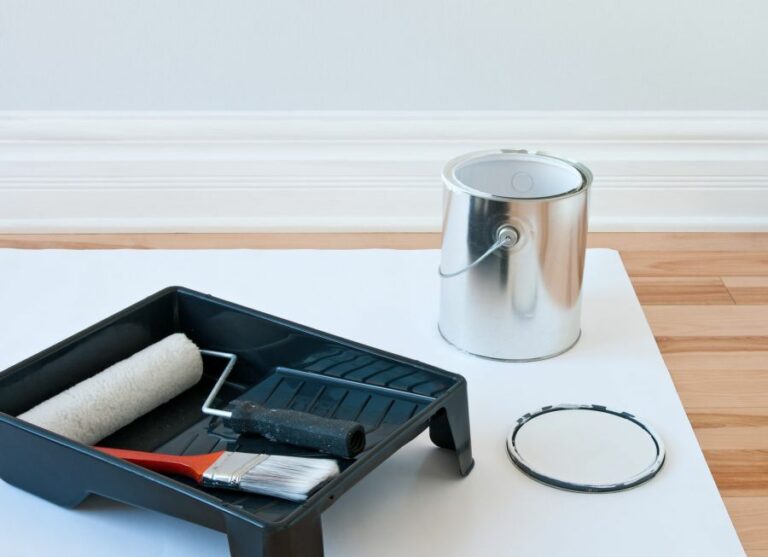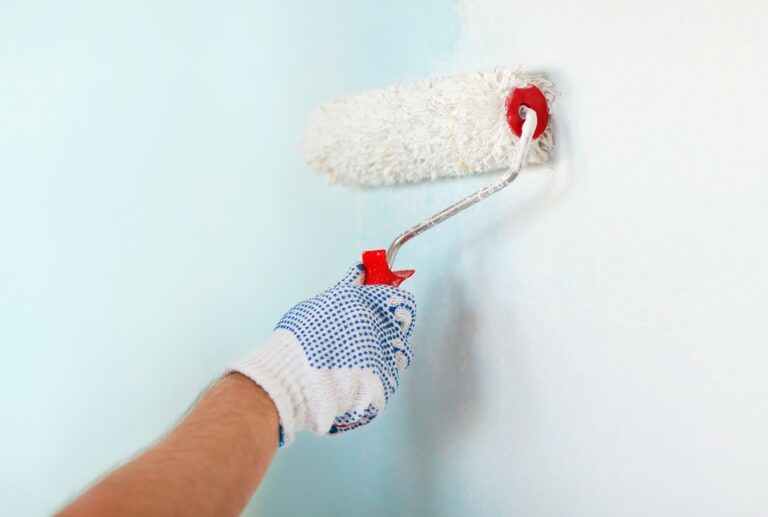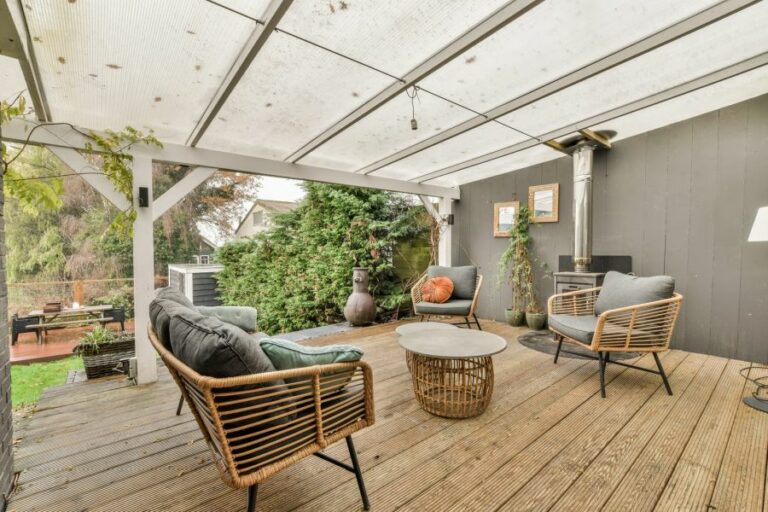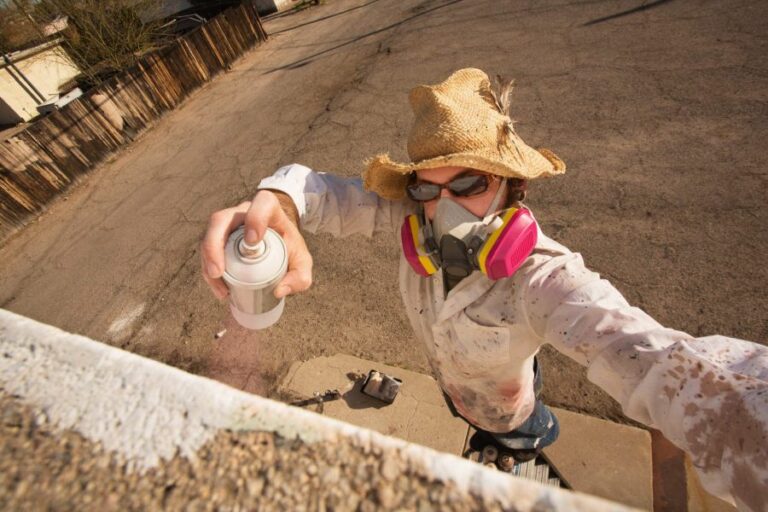How Long Does Outdoor Paint Last, 25 Things You Should Know
Are you planning to give your home’s exterior a fresh new look? A crucial aspect to consider is the lifespan of outdoor paint. This informative blog post delves into factors that impact its longevity, including climate, paint quality, and surface preparation. Discover the average duration for various paint types and practical tips to extend their vibrancy.
How long does outdoor paint last:
The lifespan of outdoor paint depends on various factors, such as weather conditions, substrate quality, and paint type. External elements like UV rays, humidity, and wind can negatively impact paint durability. The underlying material (wood, metal, concrete, or vinyl) also affects paint longevity. High-quality acrylic paint can last 5-7 years, while oil-based paint can sustain for 7-10 years. Meticulous surface preparation, adequate primer application, and timely maintenance can prolong the paint’s lifespan.

Discover the lifespan of exterior paint and the factors influencing its longevity. Uncover expert tips on choosing the right paint, proper application, and maintenance to ensure your outdoor paint job stands the test of time.
Contents
- 1 What is the Durability and Lifespan of Outdoor Paint?
- 2 Is it possible for exterior paint to have a 20-year lifespan?
- 3 What is the Recommended Frequency for Replacing Exterior Paint on Your Home?
- 4 What is the duration of exterior paint’s longevity before experiencing chipping?
- 4.1 • The Art of Permanence: A Brief Overview of Paint Durability
- 4.2 • Premium Pigments: Selecting Top-Notch Exterior Paint
- 4.3 • The Virtuoso’s Touch: How Exemplary Application Prolongs Paint Longevity
- 4.4 • The Relentless Adversary: How Environmental Factors Impact Paint Longevity
- 4.5 • Substrate Synthesis: The Role of Surface Material on Exterior Paint Longevity
What is the Durability and Lifespan of Outdoor Paint?
In our quest for home improvement, the vitality of exterior paint is undeniable. It not only enhances the property’s aesthetic appeal but also safeguards it from external adversities. However, discerning the actual lifespan of outdoor paint is rather intricate.
• Intriguing Variables Affecting Paint Longevity
– Meteorological Conditions
An amalgamation of weather phenomena, including sunlight, precipitation, and temperature fluctuations, impacts paint durability. When exposed to ultraviolet (UV) rays, certain pigments undergo attrition, resulting in discoloration and disintegration.
Similarly, heavy precipitation, torrential rains, hailstorms, or snow accentuates the risk of water intrusion, leading to peelings and blisters.
Nebulous Factors
- Humidity: A hidden nemesis, humidity hastens the degradation process by impeding proper paint adhesion, causing unsightly peelings and mildew formation.
- Wind: Battering gusts of air dislodge paint, rending the barrier less effective against external elements.
– Substrate Quality and Selection
The underlying material, wood, metal, concrete, or vinyl, governs the durability of exterior paint. Each substrate possesses idiosyncratic properties that demand distinct painting methodologies.
Wood
Though wooden surfaces exude a warm and inviting ambiance, they are susceptible to the vicissitudes of nature. When moisture-laden wood is painted, it potentially expedites bubbling and flaking. Hence, employing moisture-resistant primers before painting is crucial.
Metal
Replete with robustness, metallic surfaces boast a longer paint lifespan. However, oxidation and corrosion fundamentally impair their integrity. Therefore, utilizing corrosion-resistant primers and extra layers of paint is indispensable.
Concrete
Despite being impervious to most external influences, concrete surfaces pose a unique challenge their pH levels. Highly alkaline concrete deteriorates paint rapidly. Implementing alkali-resistant primers, epoxy paints, or mineral paints ensures that the paint job does not succumb prematurely.
Vinyl
Inheriting low paint retention, vinyl surfaces demand fastidious preparation and meticulous paint application. Employing a latex urethane primer, followed by latex paint designed for vinyl, fosters better adhesion and durability.
– Quality and Type of Paint
Opting for superior-quality paint is a prudent decision. High-quality paints comprise potent additives and innovative formulations that bolster their endurance threshold.
Acrylic vs. Oil-Based Paint
Acrylic paints, imbued with resilience and versatility, are an exemplary choice for diverse climates. While oil-based paints are relatively resistant to wear and tear, they emit fumes and exhibit longer drying durations.
• Quantifying the Longevity of Outdoor Paint
Fathoming the exact longevity of outdoor paint is a herculean task, owing to numerous external factors. Nonetheless, an approximation can be established:
- Latex (Acrylic) Paint: Typically imparts protection for 5-7 years.
- Oil-Based Paint: On average, it sustains its efficacy for 7-10 years.
Please note that these approximations are subject to geographical location and maintenance.
• Harnessing Perseverance: Tips for Prolonging Paint Lifespan
– Fastidious Preparation
Meticulous surface preparation is the bedrock of a long-lasting paint job. Ensuring the substrate is clean, dry, and free of debris or contaminants augments the probability of robust adhesion.
– Adequate Primer Application
Primers serve as a bridge between the substrate and paint, fostering adhesion and resistance to external elements. Using the right primer minimizes blistering, peeling, and premature aging.
– Timely Maintenance
Routine inspections, prompt repairs, and occasional touch-ups aid in warding off extensive damage or paint failure.
In conclusion, the lifespan of outdoor paint is contingent upon a multitude of factors. By deciphering these parameters and employing conscientious painting practices, it is plausible to extend the resilience and longevity of exterior paint.
After all, a well-preserved paint job is an emblem of pride and investment in one’s abode.
Type of Paint | Average Lifespan |
|---|---|
Acrylic/Latex | 5-10 years |
Oil-Based | 7-15 years |
Stucco | 5-7 years |
Wood | 7-10 years |
Masonry/Brick | 15-20 years |
Aluminum/Vinyl | 10-15 years |
Is it possible for exterior paint to have a 20-year lifespan?
Ever wondered about the mystical puzzle of exterior paint endurance? Embark on this arduous yet rewarding journey as we unveil the mystique behind paint longevity, and determine whether it can indeed weather the test of time and last for 20 years.
• Tinted Timekeepers: Understanding the Nature of Exterior Paints
To unravel the conundrum of exterior paint endurance, we must first apprehend the variegated nature of these peculiar pigmented coatings. Grasp the nature of the following key aspects to fathom the essence of exterior paints.
– The Rare Alchemy: Paint Composition and Its Potent Impact
Wandering through this perplexing labyrinth, one must comprehend the divergent elements comprising exterior paints. The chief constituents include resins, pigments, solvents, and additives, which coalesce and confer distinct properties to the final product.
Our exploration reveals that a peerless concoction of these components holds the arcane secret to paint’s longevity.
– The Elemental Struggle: War Against Weathering and Fading
Exterior paints must valiantly withstand the onslaught of scorching sunbeams, torrential downpours, and frigid snowstorms. Consequently, manufacturers imbue their formulations with tenacious components that resist fading and deterioration from exposure to nature’s relentless fury.
– The Supreme Application: Flawless Execution and Its Paramount Influence
A flawless paint job has the potential to transform a mundane domicile into a transcendent masterpiece. Achieving this pinnacle of excellence requires impeccable surface preparation, astute selection of primer and paint, and precision in the application process.
The confluence of these factors ultimately determines the longevity of the paint.
• The Cardinal Factors Influencing Exterior Paint Durability
While traversing the twisted paths of this enigma, we have uncovered four paramount dimensions that govern the fate of any paint job:
1. The Exemplary Substrate: Type of Surface Determines Destiny
The primary substrate or architectural surface significantly sways the destiny of the painted finish. Paint adheres divergently to various materials – wood, brick, stucco, or metal – demanding tailor-made formulations to cope with their distinct idiosyncrasies.
2. The Quality Quotient: A Testament to Paint Longevity
The caliber and composition of the paint play a crucial role in determining its ability to withstand the ravages of time.
Higher-grade paints, endowed with premium ingredients and cutting-edge technologies, provide a steadfast bulwark against the elements and retain their pristine appearance for years.
3. The Tactical Battlefront: Climatic and Environmental Variables
The local climate and ecological vicissitudes wield immense power over the lifespan of exterior paint. The vexing conundrum of paint longevity also intertwines with the quality of air, presence of pollutants, and proximity to the ocean or other corrosive environments.
4. Consistent Custodianship: Maintenance’s Symbiotic Role
An unwavering commitment to thorough maintenance can amplify the longevity of a paint job. This perpetual pursuit of preservation involves regular inspections, prompt repair of incipient damage, and cleaning to thwart the deleterious effects of dirt and algal growth.
• So, Can Exterior Paint Truly Last 20 Years? The Moment of Truth
Having delved deeply into the perplexities of paint endurance, the moment arrives to unveil the ultimate response to our enigmatic query. Whilst an arduous endeavor, it is feasible for high-quality exterior paint to endure and retain its allure for up to 20 years.
This impressive feat necessitates the harmonious interplay of the cardinal factors outlined previously – top-tier paint, apt surface compatibility, climatic resilience, and meticulous maintenance.
However, one must remain prudent and take heed of the inherent variability and mercurial nature of the forces at play. Just as the ancient alchemists sought the elusive elixir of life, achieving this hallowed 20-year milestone remains a formidable challenge, even for the most skilled and devoted practitioners.
Embark on your own odyssey of successful home beautification! Equip yourself with this arcane knowledge, astutely consider these prevailing forces, and vanquish the puzzle of exterior paint longevity. In so doing, you may breathe life into your abode for decades to come.
What is the Recommended Frequency for Replacing Exterior Paint on Your Home?
Painting your home’s exterior not only refreshes its appearance but also serves as a critical barrier against inclement weather and the ravages of time. A proper timeline for replacing exterior paint, coupled with proactive maintenance, can assuage possible degradation of your home’s facade.
• Discerning Factors: Weather, Materials, and Application
– Climate’s Influence on Paint Longevity
While there’s no one-size-fits-all prescription for replacing exterior paint, weather plays a paramount role in determining its tenure.
In regions battered by scorching heat, frigid temperatures, or incessant precipitation, the paint experiences accelerated deterioration; it may need replacement after six to seven years. Conversely, areas with mild and moderate climes may sustain a fresh coat for up to ten years.
– Understanding Material Dynamics
- Wooden Surfaces: Pondering the beautiful woodwork on your domicile? Take heed of wood’s susceptibility to wear and tear, particularly swelling and shrinkage influenced by humidity fluctuations. On average, wood siding necessitates repainting every 3-7 years, with stained wood requiring refinishing every four years.
- Stucco: This robust exterior finish imparts texture and grit, making it a desirable option for an enduring new coat. Typically, stucco necessitates repainting every five to six years.
- Brick: If your home flaunts an exposed brick facade, resetting the paint should occur every 15-20 years. Bear in mind that brick veneer siding is more delicate. Anticipate paint replacement every five years when it graces your house’s exterior.
- Vinyl and Aluminum: Exhibiting admirable longevity, vinyl and aluminum sidings are virtually maintenance-free. Notwithstanding, expect to rejuvenate this durable duo every 20 years, barring discoloration or denting.
– The Art of Application
A disciplined and masterful application process considerably influences your paint’s lifespan. Superlative adhesion, owing to the thorough preparation and superior products, lays the foundation for a lasting finish.
Shoddy execution may drastically truncate the paint’s lifespan, prompting a swift revisit to the task at hand.
• Signs the Time has Come: Indications of Decay
– Cracking, Peeling, and Fading – Oh My!
Inspect your home’s exterior periodically for visible distress signals. When you supplant these sentiments with action, you mitigate your home’s susceptibility to elemental ramifications.
- Noticeable Fading: Observe any discernible lightning, particularly in a sun-drenched area. This symptom signals that the paint’s protective potency is dwindling.
- Cracking and Peeling: These blemishes, in conjunction with flaking, indicate that the paint is losing its tenacious grip. Replace it expeditiously to avert an increasingly aging countenance, as well as mounting costs to restore the surface underneath.
- Chalking: Rub your fingers across the exterior; a powdery residue indicates “chalking,” the degradation of paint binders due to ultraviolet light exposure.
- Mold, Mildew, and Rot: These unsightly blots warrant swift intervention, as they may conduct a structural decline in your home’s exterior.
• A Stitch in Time: Preemptive Measures and Maintenance
Ongoing maintenance extends the life of your current paint job while preserving your home’s resplendence. Commit to the following cardinal compass tips:
- Regular Inspections: Conduct seasonal assessments of your home’s exterior, diligently noting any telltale aberrations that could potentially escalate.
- Frequent Cleaning: Gently pressure-wash the exterior annually to expunge accumulated dirt, debris, and mildew.
- Prompt Repairs: Address emerging issues immediately to inhibit their progression, employing professional expertise when necessary.
- Comprehensive Preparations: Before embarking on a new paint job, meticulously prepare the surface, remove loose paint fragments, sand the rough spots, repair dents, and apply a top-notch primer.
- Quality Materials: Invest in premium paints and coatings specifically formulated for your region’s climate and your home’s exterior. This prudence pays dividends in terms of durability and appearance.
In conclusion, the frequency of replacing exterior paint depends on various factors, weather conditions, surface materials, application techniques, and maintenance efforts. Familiarize yourself with these elements and establish a routine for preventative care.
Your diligence will ensure a protracted paint lifespan and endow your home with an enviable, well-preserved facade.
What is the duration of exterior paint’s longevity before experiencing chipping?
• The Art of Permanence: A Brief Overview of Paint Durability
The longevity of exterior paint hinges on multifarious components: the caliber of the paint, the expertise of the applicator, the environs it confronts, and the surface upon which it adheres.
The kaleidoscope of these factors contributes to the singular question: How long should exterior paint last before evincing signs of chipping?
• Premium Pigments: Selecting Top-Notch Exterior Paint
To achieve laudable durability in your exterior paint, the initial step is opting for a preeminent product. High-quality paints encompass superior adhesion, flexibility, and fortitude against the elements.
– Characteristics of Exemplary Paints
- Exalted Binders: Binders impact the tenacity of paint on a surface. Premium-grade binders encompass an optimal balance between pliability and rigidity, rendering long-lasting endurance.
- UV-Resistant Pigments: Exceptional paints possess UV-resistant pigments that deter fading, infusing your paint with perpetuity.
- Formidable Mildew Resistance: Exemplary paints impede the pernicious growth of mildew, reducing the frequency of repainting.
- Unassailable Water Resistance: Quality paints function as an impervious barrier to water, precluding vapor transmission, blisters, or swelling.
• The Virtuoso’s Touch: How Exemplary Application Prolongs Paint Longevity
Even the most exemplary paint can succumb to chipping if applied with abject disregard. Thus, a sagacious applicator implements fastidious procedures, including proper preparation, priming, and accurate paint layering.
– Prerequisites for a Flawless Exterior
- Surface Preparation: Comprehensive cleaning of surfaces, including the removal of dirt, dust, mildew, and loose paint, ensures optimal adhesion.
- Impeccable Sanding: Sanding festoons the surface with a “tooth” that augments adhesion, creating a stalwart bond between the paint and the substrate.
- Prime Time: Priming generates a cohesive bond between the substrate and the topcoat, curtailing chipping and bolstering durability.
– Layers of Protection: Continuity and Opacity
Exterior paint longevity is intimately tethered to the thickness and uniformity of paint layers. Triumphantly balancing the two will not only ameliorate the vivacity of the colors but also bolster durability against chipping.
• The Relentless Adversary: How Environmental Factors Impact Paint Longevity
Notwithstanding the virtuosity of the applicator, climatic conditions can severely impair paint durability. Exterior surfaces encounter an incessant barrage of ultraviolet radiation, wind, rain, snow, and temperature fluctuations that inexorably contribute to wear and tear.
– Weathering the Storm: Factors Influencing Paint Durability
- UV Radiation: Prolonged exposure to sunlight can degrade the paint film, causing fading, chalking, and chipping.
- Water: Rain and snow can undermine paint adhesion, causing blisters and peeling.
- Temperature Extremes: Insidious fluctuations in temperature can lead paint to contract and expand, inducing cracking and chipping.
- Moisture: Substrates with excess moisture can mar adhesion, giving rise to blistering, peeling, or chipping.
• Substrate Synthesis: The Role of Surface Material on Exterior Paint Longevity
The substrate’s composition plays an indispensable role in determining how long exterior paint will resist chipping. Below are a few salient substrates and their influence on paint durability.
– Elemental Encounters: Substrates & Durability
- Wood: Adequately prepared, primed, and painted wood should imbibe high-quality paint with sublime results. However, untreated wood can foster moisture infiltration, compromising paint adhesion and inducing chipping.
- Brick: Brick surfaces grant exultant adhesion, which can extend paint longevity. Nonetheless, moisture penetration can chip away at the paint’s integrity.
- Vinyl Siding: Exterior paint adheres well to vinyl siding, but fluctuations in temperature can provoke distortion or buckling, thus undermining the paint’s durability.
To reconcile these multifaceted aspects, it is prudent to surmise that high-quality exterior paint, masterfully applied to a meticulously prepared surface, should perdure between 5 to 10 years before signs of chipping are conspicuous.
Nevertheless, one must remain vigilant to ensure the paint’s integrity is preserved against climatic onslaughts and substrate discrepancies. The conservation of beauty and the triumph over the inexorable march of time requires an alliance of pigment, prowess, and vigilance.
Type of Paint | Expected Lifespan Before Chipping |
|---|---|
Acrylic Latex | 5-10 years |
Oil-Based | 7-15 years |
Elastomeric | 10-20 years |

